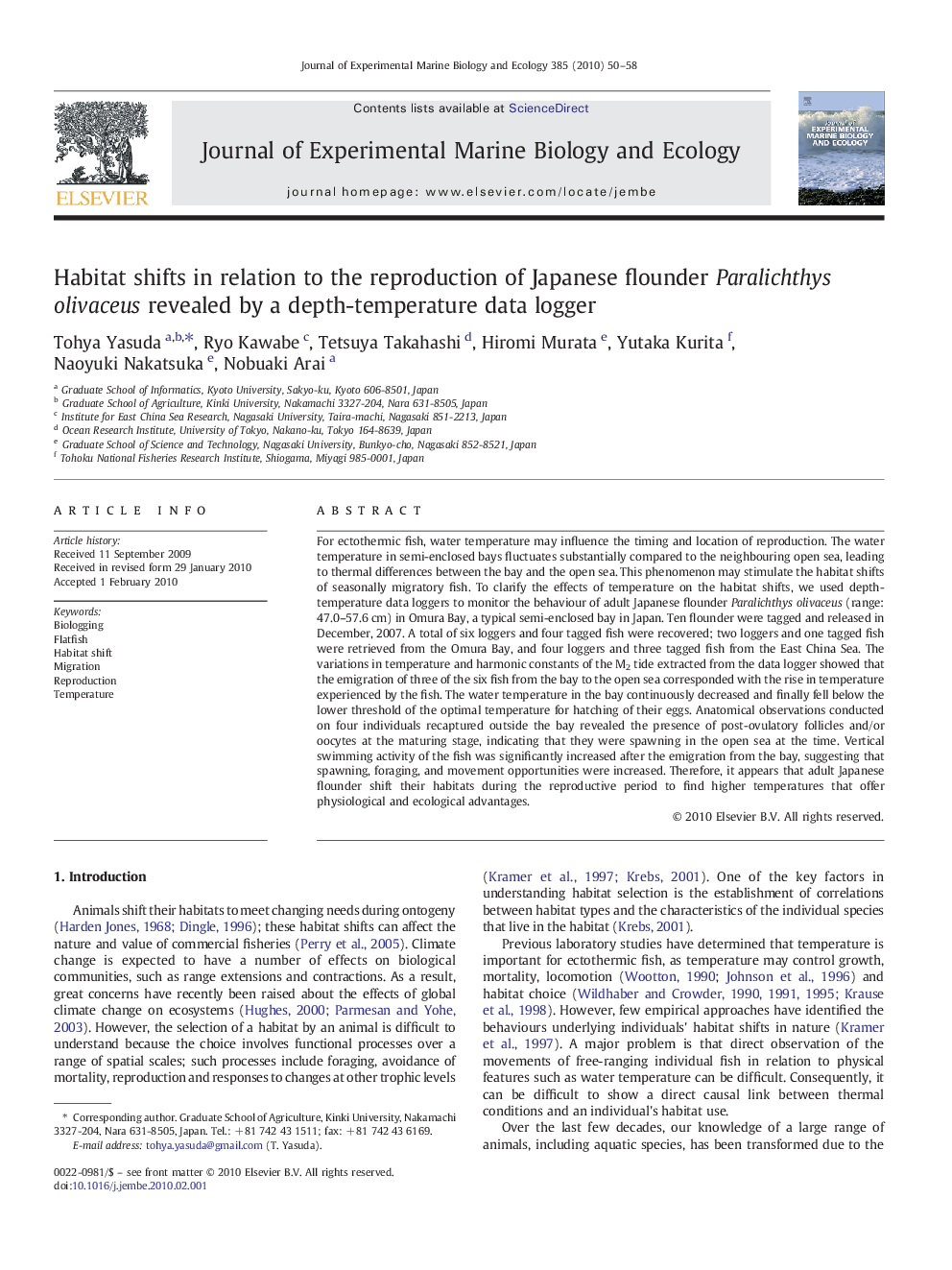| کد مقاله | کد نشریه | سال انتشار | مقاله انگلیسی | نسخه تمام متن |
|---|---|---|---|---|
| 4396730 | 1618475 | 2010 | 9 صفحه PDF | دانلود رایگان |

For ectothermic fish, water temperature may influence the timing and location of reproduction. The water temperature in semi-enclosed bays fluctuates substantially compared to the neighbouring open sea, leading to thermal differences between the bay and the open sea. This phenomenon may stimulate the habitat shifts of seasonally migratory fish. To clarify the effects of temperature on the habitat shifts, we used depth-temperature data loggers to monitor the behaviour of adult Japanese flounder Paralichthys olivaceus (range: 47.0–57.6 cm) in Omura Bay, a typical semi-enclosed bay in Japan. Ten flounder were tagged and released in December, 2007. A total of six loggers and four tagged fish were recovered; two loggers and one tagged fish were retrieved from the Omura Bay, and four loggers and three tagged fish from the East China Sea. The variations in temperature and harmonic constants of the M2 tide extracted from the data logger showed that the emigration of three of the six fish from the bay to the open sea corresponded with the rise in temperature experienced by the fish. The water temperature in the bay continuously decreased and finally fell below the lower threshold of the optimal temperature for hatching of their eggs. Anatomical observations conducted on four individuals recaptured outside the bay revealed the presence of post-ovulatory follicles and/or oocytes at the maturing stage, indicating that they were spawning in the open sea at the time. Vertical swimming activity of the fish was significantly increased after the emigration from the bay, suggesting that spawning, foraging, and movement opportunities were increased. Therefore, it appears that adult Japanese flounder shift their habitats during the reproductive period to find higher temperatures that offer physiological and ecological advantages.
Journal: Journal of Experimental Marine Biology and Ecology - Volume 385, Issues 1–2, 1 April 2010, Pages 50–58